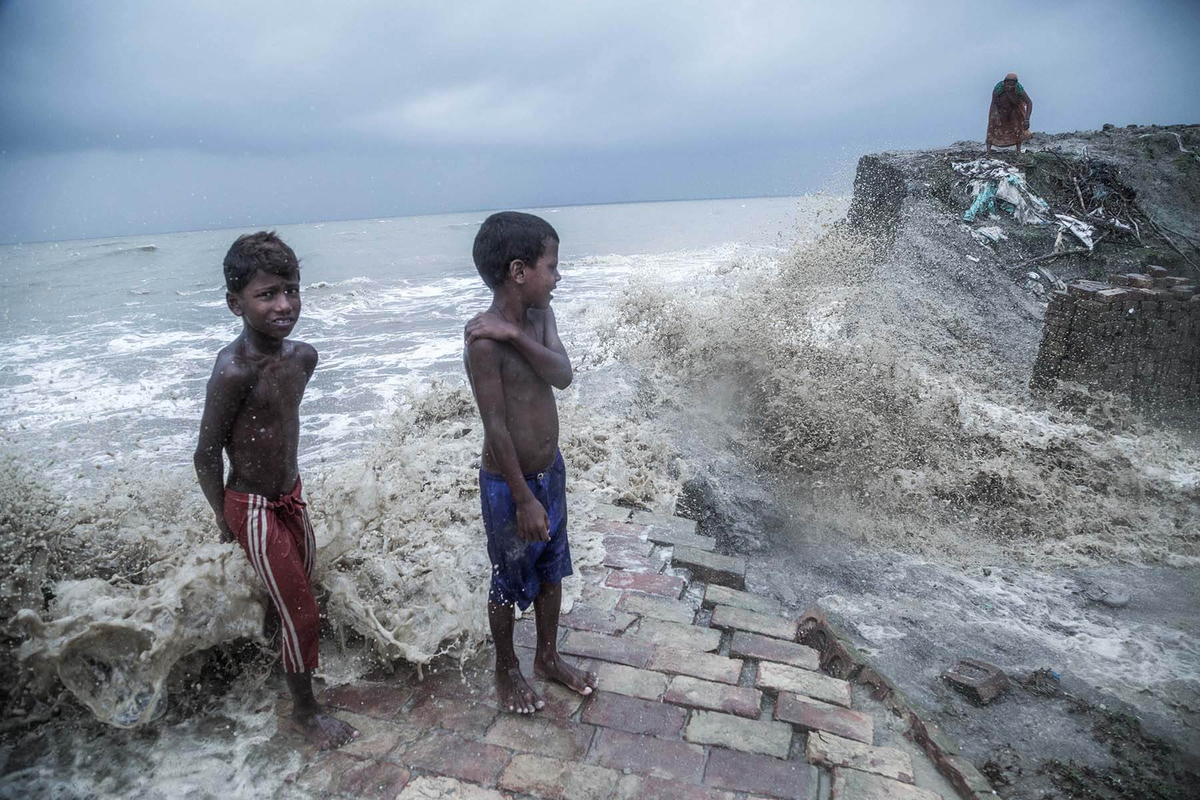This is what resilience looks like

Mangroves around the world are shrinking due to deforestation and erosion. Our storyteller, Supratim Bhattacharjee, travelled to the Sundarbans in India to see what happens as mangrove forests disappear and erosion begins to take its toll.
In 2014, I started the project Sinking Sundarbans with one simple question: How does life in one of the largest mangrove forests of the world look like?
Meanwhile, I made hundreds of photos to show the perspective of coastal people and their hardships to the world. I approached the people and their forest from the outside as an observer with a photo camera, and from the inside as an engaged reporter who has genuine interest in the situation of the local community.
The Sundarbans is an important part of my childhood, so I feel engaged with the people living there
The Sundarbans is an important part of my childhood, so I feel engaged with the people living there. I grew up in Baruipur near Kolkata and frequently travelled to the mangroves, to visit my uncle's house. It was a dense forest and buffer zone back then, but gradually, due to human pressures, this ecosystem was damaged.
I witnessed a rapid forest decline in recent years. People in this area are also vulnerable to flooding, erosion and submergence, due to storm surges and sea level rise. Therefore, it's not surprising that local people in this area become homeless. When I talked with them about their living conditions, a sheer pain stabbed my heart.
I decided to document the life lessons these coastal people learned, while living with the sea.




Building a new future
Soil salinity is increasing day by day and local communities in the Sundarbans are suffering from limited access to clean drinking water as a result of it. People need to travel long distances to fetch water. The water they get for drinking is often of poor quality. Salinity is also hampering agriculture, and this causes food and economic crises in the area.
Furthermore, due to global warming the sea level has risen. Consequently, islands in the Sundarbans experience more severe tidal floods, which is one of the main reasons that these islands are sinking. Local people are migrating to the metropolitan cities, which is a new phenomenon. I witnessed this change myself.
The Sundarbans has been declared as a UNESCO World Heritage Site. It is important to bring its degradation to the attention of an international audience. I hope the local communities' cries will never fade away in the dazzling lights of modern civilization. Together, we can help these already resilient people to build a new future.


Sundarbans' local people under threat
The southern part of the Ganges-Brahmaputra-Meghna delta lies in India and Bangladesh. The Indian delta region covers around 4,000 square kilometers, including mangroves and more than a hundred swampy islands, out of which 54 are inhabited with a population of about 4 million people.
Coastal regions around the world are threatened by climate change-induced sea level rise. The sea level in the Sundarbans rises faster than in the rest of the world. A rural area like the Sundarbans cannot face the fatal consequences of global warming alone. As mentioned earlier, people are already on the move. India and the rest of the world will need to accommodate the 'climate refugees'.
Deforestation has cast a gloom over the land of the Sundarbans; local inhabitants cut down a huge number of trees to collect wood for fuel, leaving the land vulnerable to river and coastal flooding. The mangroves used to work as a buffer against storms and cyclones.
Now that the buffer is being destroyed, the main land is under a severe threat from natural hazards. Trees used to hold the soil tight. In their absence the land can be easily washed away by river and sea water. The level of soil erosion is increasing day by day and water is gobbling up the land. Places like Ghoramara and Mousuni Island are almost drowned.
People who had plenty of land before, lost a lot of land to the sea. Much of the remaining land has become too saline for cultivation. The resultant food crisis has made life difficult. Some farmers take huge loans from local moneylenders and struggle hard to pay them off. The shrewd moneylenders are making huge profits out of this situation.
As agricultural opportunities are shrinking, people move to the cities
As agricultural opportunities are shrinking, people move to the cities. However, these 'magnets' are not able to provide enough employment. Even if people find a job, they are often being exploited by the employers. It is challenging to sustain a good life in the cities.
Other people explore alternative livelihood options, such as going to the forest for honey collection or to the rivers for fishing. These are dangerous activities and death becomes as usual as life for them. Men and women are being attacked by tigers quite often as they collect honey in the forest. Crab is highly profitable as it as is a popular food item in Western countries. However, crabbing comes with horrible dangers.
During my trips to the Sundarbans I met people, who lost family members to tiger attacks. When a person dies in such a horrible way, the backbone of a family is broken. Their survivors are ruled by fear. They don't dare to set foot in the jungle and try to get by with a meagre income.

My heart cried many times as I travelled through the Sundarbans. I took the oath to capture and present the pictures of the Sundarbans and its people to a global audience. I hope that everyone who sees my photos, will feel the same urge to respond to the local communities' suffering.
Ultimately, it's my dream that people in the Sundarbans will find a new ray of hope and that they will have better lives.






Member discussion